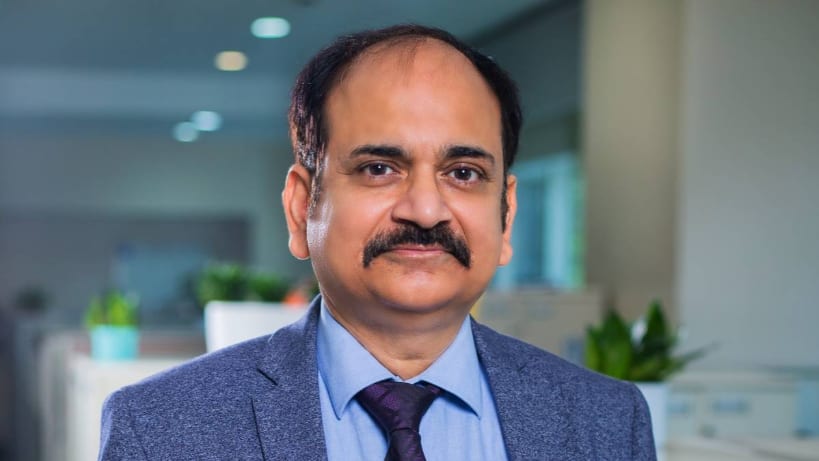Pankaj Kumar Pandey, CIO, SBI General Insurance, throws light on the digital distribution strategy adopted to tap the rural insurance market in India.

Pankaj Kumar Pandey, CIO, SBI General Insurance
As far as rural areas are concerned, where connectivity remains a challenge and insurance penetration is still low, how are you addressing this market from a technology and strategy perspective?
Rural markets have unique characteristics and challenges. Insurance products must be affordable, easy to understand, simple to purchase, and convenient to access for services. Since setting up physical offices everywhere is not feasible, digital is the only way to reach the masses and ensure a strong presence.
Our digital assets and strategy are helping us move in that direction. Being associated with SBI is also a major advantage, as SBI has an extensive branch network across India, including tier 3 and tier 4 regions. We are integrated with the SBI ecosystem so that insurance penetration can happen through digital means in all these areas.
We have also tied up with various entities, including government bodies and cooperative societies, to expand our reach. For example, we recently partnered with a cooperative society, and we have several similar partnerships with government organisations that help us serve rural regions effectively.
Crop insurance is another strong focus area for us. Through our digital distribution platform, such policies can now be sold and serviced via mobile applications with real-time payment and instant policy issuance. We have also designed many rural-focused products that offer relevant coverage at affordable prices.
Our distribution partners in rural regions are actively helping us promote these products. Looking ahead, we are aligned with IRDAI’s initiatives such as Bima Vistar and Bima Vahak, which will further boost insurance penetration in rural markets.
Importantly, our entire sales and service process for rural customers is now fully paperless. Any paper-based process would complicate things and slow adoption. By keeping it entirely digital, we are making insurance more accessible, affordable, and trustworthy for rural masses.
Since you mentioned crop insurance, are you also using drones to assess crop damage, especially given the recent weather challenges across various states?
Yes, we have tie-ups with certain organisations that conduct drone surveys. They provide us with aerial images and insights, which are used by our sales, actuarial, and underwriting teams to assess crop damage.
In addition, we have developed a unique mobile application called Krishak for farmers. Through this app, farmers can view their policies, submit service requests, check claim status, and access useful farming-related information. The Krishak app supports 18 Indian languages and is designed to be easy to use by anyone, giving us excellent coverage across rural areas.
There’s now a widespread digital public infrastructure (DPI) available under Digital India — accessible data, interoperable APIs, and shared platforms. How are you leveraging this for business growth?
We are actively integrating with multiple components of the government’s Digital India framework. For instance, we are integrated with the ONDC platform, which enables entities to sell insurance products directly.
We have also integrated with the National Health Exchange (NHX) platform for creating ABHA IDs and linking with hospitals and labs. As more entities join NHX, customers will benefit from easy, transparent, and secure sharing of health data — fully controlled by them.
In addition, we are leveraging APIs from various public bodies like CKYC for instant KYC verification, PAN validation via NSDL, and vehicle data from VAHAN. These integrations make digital transactions seamless while reducing fraud and operational risk.
Speaking of technology, how are you engaging with the broader InsurTech ecosystem? Are there collaborations or partnerships with startups?
At SBI General, innovation has always been a strong focus area. It’s not only about following trends but also about being the first to introduce new solutions. We have a dedicated innovation unit called Digi-Lab. This team explores emerging technologies and regularly meets with InsurTech startups to evaluate new solutions.
We value technology and thoroughly evaluate platform capabilities. For instance, our current distribution platform—which now handles all business bookings across channels—originated from an InsurTech startup collaboration. It operates as both a portal and an app and has been highly successful.
We also maintain a hybrid development model. Some solutions are developed in-house, while others are done in partnership with third-party providers. For example, the Krishak app I mentioned earlier was built entirely in-house. At present, we are actively working with about two or three startups.
Could you share some of the proof-of-concept projects you’ve recently undertaken?
Certainly. We have conducted POCs in several areas. One was in telematics—analyzing motor usage and driver behavior to collect and interpret data for usage-based pricing.
Another POC focused on health claim auto-adjudication, where documents are automatically reviewed and matched with policy terms to determine payable and non-payable items.
We have also done POCs for our contact center, particularly for handling incoming calls more efficiently through automation and AI-based decision-making.
As far as experimenting with various technologies is concerned, taking care of regulations is also very important. The IRDAI has launched a sandbox environment for insurance companies to test technologies in a regulated setup. Are you also using the IRDAI sandbox?
Yes, wherever we find it useful, we make use of the sandbox arrangement. Apart from IRDAI, the Insurance Information Bureau of India (IIB) has also come up with several useful solutions and APIs. We have already integrated many of these with our applications. They provide valuable insights from the aggregated industry data without compromising customer information.
Climate change has made weather unpredictable, affecting claims and risk management. Is technology helping insurers like SBI General prepare better — perhaps through forecasting or pricing models based on weather and geography?
Using weather and geographic data for pricing and forecasting is still futuristic. It’s part of our long-term data analytics roadmap. We’re exploring how to combine weather information, geography, and socio-economic data to build predictive models. Discussions are ongoing, but it’s still at a conceptual stage.
The IRDAI is also launching the Bima Sugam portal — a unified marketplace for insurance products. Are you planning to integrate with it?
Yes, we are fully geared up for integration with Bima Sugam. It’s envisioned as a one-stop platform — simple, transparent, and customer-friendly. Though not yet launched, it should go live within a few months. SBI General is among the companies supporting its development.
From a technology standpoint, how will Bima Sugam work in integrating all insurers and serving customers through the entire insurance lifecycle?
The concept is that Bima Sugam will act as a central marketplace where products from all insurance companies will be displayed in a standardized format. Customers can easily compare offerings and purchase policies directly.
Once a policy is bought, Bima Sugam will also support renewals, premium payments, policy downloads, service requests, and claim tracking — all through real-time integration with insurers’ systems.
Empower your business. Get practical tips, market insights, and growth strategies delivered to your inbox
By continuing you agree to our Privacy Policy & Terms & Conditions
